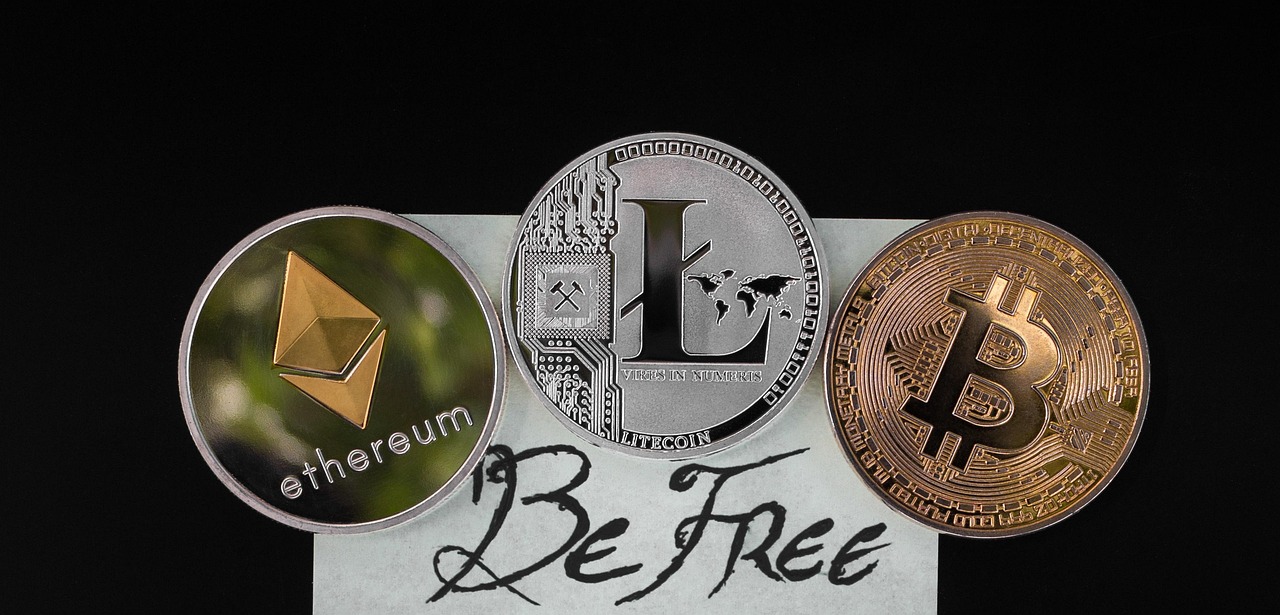In the exciting world of cryptocurrency, navigating the digital landscape requires more than just enthusiasm; it demands a keen understanding of crypto security. With digital assets becoming increasingly valuable, they’ve also become prime targets for malicious actors. Protecting your crypto investments is paramount, and in this comprehensive guide, we’ll delve into the essential security measures you need to adopt to safeguard your digital wealth. From understanding common threats to implementing robust protection strategies, this guide provides the knowledge you need to navigate the crypto sphere with confidence.
Understanding Common Crypto Security Threats
Phishing Attacks
Phishing remains one of the most prevalent and effective attack vectors in the crypto space. These attacks often involve deceptive emails, websites, or messages designed to trick users into revealing their private keys, passwords, or other sensitive information.
- Example: A user receives an email purportedly from a reputable crypto exchange, claiming their account has been compromised and prompting them to click a link to reset their password. The link leads to a fake website that mimics the actual exchange, and any credentials entered are stolen.
- Prevention Tips:
Always verify the sender’s email address carefully, looking for subtle misspellings or unusual domains.
Never click on links in emails or messages from unknown or suspicious sources.
Enable two-factor authentication (2FA) on all your crypto accounts.
Bookmark the official websites of crypto exchanges and wallets and access them directly.
Malware and Keyloggers
Malware, including keyloggers, can silently infect your computer or mobile device and steal your private keys or other sensitive information. Keyloggers record every keystroke you make, including passwords and private keys.
- Example: A user downloads a seemingly legitimate software application from an untrusted source. Unbeknownst to them, the application contains a keylogger that records their crypto wallet password when they log in.
- Prevention Tips:
Install and maintain a reputable antivirus and anti-malware program.
Be cautious when downloading software or files from the internet, especially from untrusted sources.
Regularly scan your computer for malware.
Consider using a separate computer or device exclusively for crypto transactions.
Social Engineering
Social engineering attacks rely on manipulating individuals into revealing confidential information or performing actions that compromise their security. These attacks often exploit human psychology and trust.
- Example: A scammer poses as a customer support representative from a crypto exchange and calls a user, claiming there’s suspicious activity on their account. The scammer then convinces the user to provide their 2FA code or other sensitive information.
- Prevention Tips:
Be skeptical of unsolicited calls, emails, or messages asking for personal or financial information.
Never share your private keys, passwords, or 2FA codes with anyone.
Verify the identity of any individual or organization claiming to represent a crypto exchange or wallet provider. Contact customer support directly using official channels if you are unsure.
Exchange Hacks
While you secure your personal crypto holdings, it’s essential to be aware of the risks associated with centralized exchanges. Exchanges hold large amounts of cryptocurrency, making them attractive targets for hackers.
- Example: A major crypto exchange is breached, and hackers steal millions of dollars worth of cryptocurrency from user accounts.
- Prevention Tips:
Choose reputable exchanges with strong security measures. Research the exchange’s security history and reputation before depositing funds.
Enable 2FA on your exchange account.
Do not store large amounts of cryptocurrency on exchanges for extended periods. Transfer your funds to a personal wallet for long-term storage.
Securing Your Crypto Wallets
Choosing the Right Wallet
Selecting the right crypto wallet is crucial for securing your digital assets. There are several types of wallets available, each with its own security trade-offs:
- Hardware Wallets: These are physical devices that store your private keys offline, providing a high level of security. Examples include Ledger and Trezor.
Benefit: Protection against online threats like malware and phishing.
- Software Wallets: These are applications that you install on your computer or mobile device. Examples include Exodus and Trust Wallet.
Benefit: Convenient and easy to use.
Risk: Vulnerable to malware and hacking if your device is compromised.
- Online (Web) Wallets: These are web-based services that store your private keys on a server. Examples include MetaMask (with careful configuration).
Benefit: Accessible from any device with an internet connection.
Risk: Highest risk of security breaches as your keys are stored online and potentially accessible to third parties.
- Paper Wallets: These involve generating your private key and public address offline and printing them on a piece of paper.
Benefit: Very secure if generated and stored properly.
Risk: Risk of physical damage or loss, and requires careful handling.
Best Practices for Wallet Security
- Strong Passwords: Use strong, unique passwords for all your crypto wallets and accounts. A password manager can help you generate and store secure passwords.
- Two-Factor Authentication (2FA): Enable 2FA on all your crypto wallets and accounts. 2FA adds an extra layer of security by requiring a second verification factor, such as a code from your mobile device.
- Backup Your Wallet: Regularly back up your wallet to a secure location. This will allow you to recover your funds if your device is lost, stolen, or damaged.
- Keep Your Software Up-to-Date: Regularly update your wallet software to ensure you have the latest security patches.
- Use a VPN: When accessing your crypto wallets or accounts on public Wi-Fi networks, use a virtual private network (VPN) to encrypt your internet traffic and protect your data.
Cold Storage vs. Hot Storage
Understanding the difference between cold and hot storage is vital for securing your crypto assets.
- Cold Storage: Involves storing your private keys offline, such as on a hardware wallet or paper wallet.
Benefit: Significantly reduces the risk of online attacks.
Use Case: Ideal for long-term storage of large amounts of cryptocurrency.
- Hot Storage: Involves storing your private keys online, such as in a software wallet or on an exchange.
Benefit: Convenient for frequent transactions.
Risk: More vulnerable to online attacks.
Use Case: Suitable for smaller amounts of cryptocurrency that you need to access regularly.
Implementing Multi-Factor Authentication (MFA)
What is Multi-Factor Authentication?
Multi-factor authentication (MFA) adds an extra layer of security to your crypto accounts by requiring multiple verification factors before granting access. This makes it much more difficult for attackers to gain unauthorized access to your accounts, even if they have your password.
Types of Authentication Factors
- Something You Know: This is typically your password or PIN.
- Something You Have: This could be a code generated by an authenticator app (like Google Authenticator or Authy), a security key (like a YubiKey), or a confirmation code sent to your mobile device via SMS.
- Something You Are: This refers to biometric authentication, such as fingerprint scanning or facial recognition.
How to Enable MFA
Staying Informed and Vigilant
Keeping Up with the Latest Security Threats
The crypto security landscape is constantly evolving, with new threats and vulnerabilities emerging all the time. It’s essential to stay informed about the latest security risks and best practices.
- Follow Security News and Blogs: Subscribe to reputable security news outlets and blogs that cover crypto security.
- Participate in Crypto Communities: Engage in online crypto communities and forums where users share information about security threats and solutions.
- Attend Security Conferences and Webinars: Attend security conferences and webinars to learn from experts and stay up-to-date on the latest security trends.
Recognizing and Reporting Scams
Scams are rampant in the crypto space, and it’s important to be able to recognize and report them.
- Be Wary of Promises of Guaranteed Returns: Scammers often lure victims with promises of high returns or guaranteed profits. Remember that there are no guaranteed returns in crypto, and any offer that sounds too good to be true probably is.
- Watch Out for Pressure Tactics: Scammers often use pressure tactics to rush victims into making decisions before they have time to think things through.
- Report Scams: If you encounter a scam, report it to the appropriate authorities, such as the Federal Trade Commission (FTC) in the United States. Also, report the scam to the crypto exchange or platform where you encountered it.
Regularly Reviewing Your Security Practices
Security is an ongoing process, not a one-time event. It’s important to regularly review your security practices to ensure that they are still effective and up-to-date.
- Review Your Passwords: Change your passwords regularly and make sure they are strong and unique.
- Update Your Software: Keep your software up-to-date with the latest security patches.
- Monitor Your Accounts: Regularly monitor your crypto accounts for suspicious activity.
Conclusion
Securing your crypto assets is an ongoing responsibility, but by understanding the common threats and implementing the security measures outlined in this guide, you can significantly reduce your risk of becoming a victim of fraud or theft. From choosing the right wallets to enabling multi-factor authentication and staying informed about the latest security threats, every step you take to protect your crypto investments contributes to a safer and more secure crypto experience. Remember, vigilance and proactive security measures are your strongest allies in the ever-evolving world of cryptocurrency.




